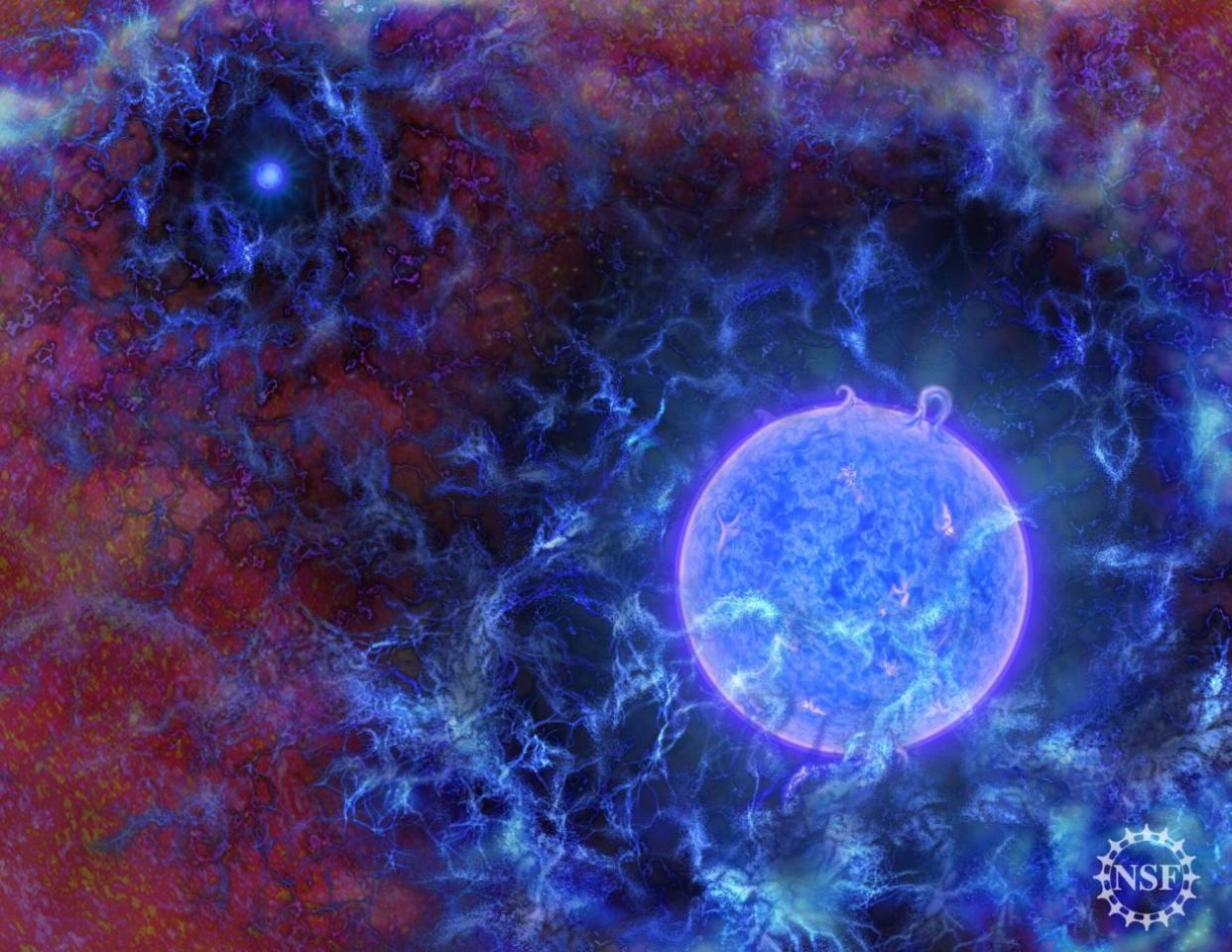Mysterious signals found as scientists ‘see’ first stars forming after the Big Bang

Scientists have detected evidence of the earliest stars in the universe, just 180 million years after the Big Bang – and found something else.
The radio signals also contain a hint of the mysterious ‘dark matter’ which is believed to make up 85% of the matter in the universe.
Researchers from Arizona State University analysed radio signals ground-based instrument called a radio spectrometer, located at the Australian national science agency’s (CSIRO) Murchison Radio-astronomy Observatory.
They found signals believed to come from the oldest stars ever detected.

Arizona State’s Judd Bowman said, ‘It is unlikely that we’ll be able to see any earlier into the history of stars in our lifetimes.
‘This project shows that a promising new technique can work and has paved the way for decades of new astrophysical discoveries.’
MOST POPULAR TODAY ON YAHOO
Beast from the East: Snow brings Britain to a standstill as temperatures plummet to -10C
Storm Emma meets Beast from the East: Snow and blizzards bring Britain to a halt
Three arrested on suspicion of manslaughter after deadly Hinckley Road explosion
British teenage student raped and beaten by two men in Berlin bar during college trip
This updated timeline of the universe reflects the recent discovery that the first stars emerged by 180 million years after the Big Bang.
The study also revealed that gas in the universe was probably much colder than expected – less than half the expected temperature.
This may be the first evidence of non-standard physics: specifically, that baryons (normal matter) may have interacted with dark matter and slowly lost energy to dark matter in the early universe, a concept that was originally proposed by Rennan Barkana of Tel Aviv University.
Bowman said, ‘If Barkana’s idea is confirmed, then we’ve learned something new and fundamental about the mysterious dark matter that makes up 85 percent of the matter in the universe, providing the first glimpse of physics beyond the standard model.’

 Yahoo News
Yahoo News 

